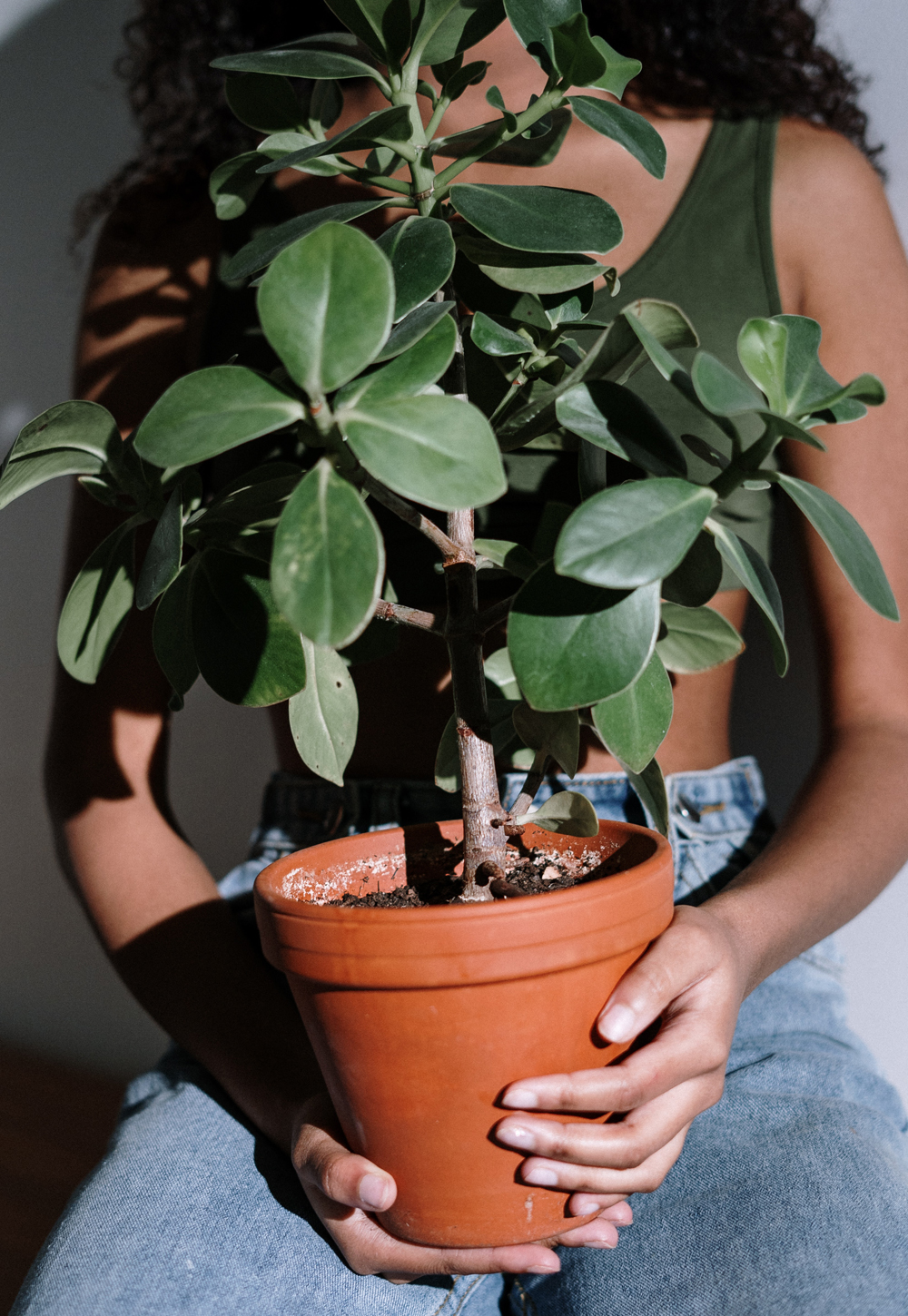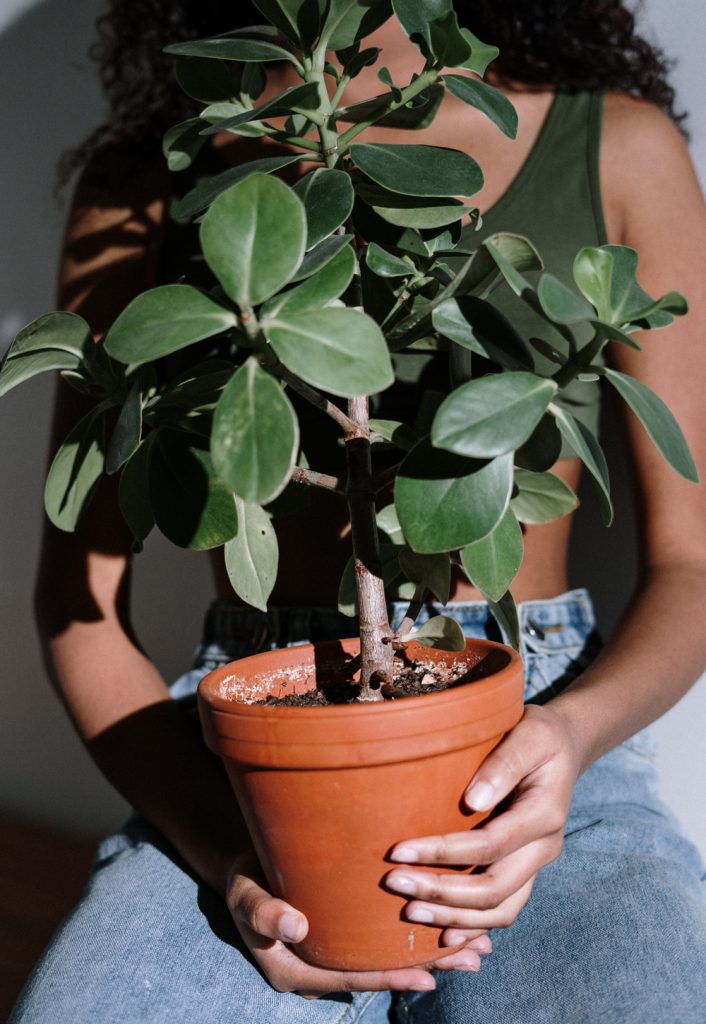
It’s a good idea to bring your tropical container plants inside when temperatures drop. Photo: Cottonbro / Pexels
In some parts of the country like San Diego, the transition from summer to fall to winter is subtle. There are no obvious signs like colorful fall leaves – unless you take the time to look. Liquid Ambar trees are starting to turn red, and both sycamores and cottonwoods in the valleys and canyons are turning yellow right now. But you can still feel the steeper temperature drops from daytime highs to nighttime lows and the steady cooling trend.
Your container plants living outside feel it too. Some of them need protection from the coldest winter weather. In San Diego County, we have four climate zones – coastal, inland, mountains, and desert. Most of the city is within the coastal and inland valley zones where it rarely freezes. But even in a Mediterranean style climate, it can drop below freezing at night in protected lowlands.
Some plants might tolerate the cold weather if their roots were protected by ground soil that retains heat. But they don’t do well in the small amount of soil in a pot. Tropical container plants thriving outdoors in the summer will do better inside, and can get through a few months with the lower light indoors.
It’s a good time to take a look outside on your porch, front walkways, patios, and other areas and decide whether any of your plants need to come inside for the winter.
Depending on your climate and the earliest possibility of an overnight freeze, it is best to bring all plants in at the same time, and leave them inside until the very last chance of a freeze is over in the spring.
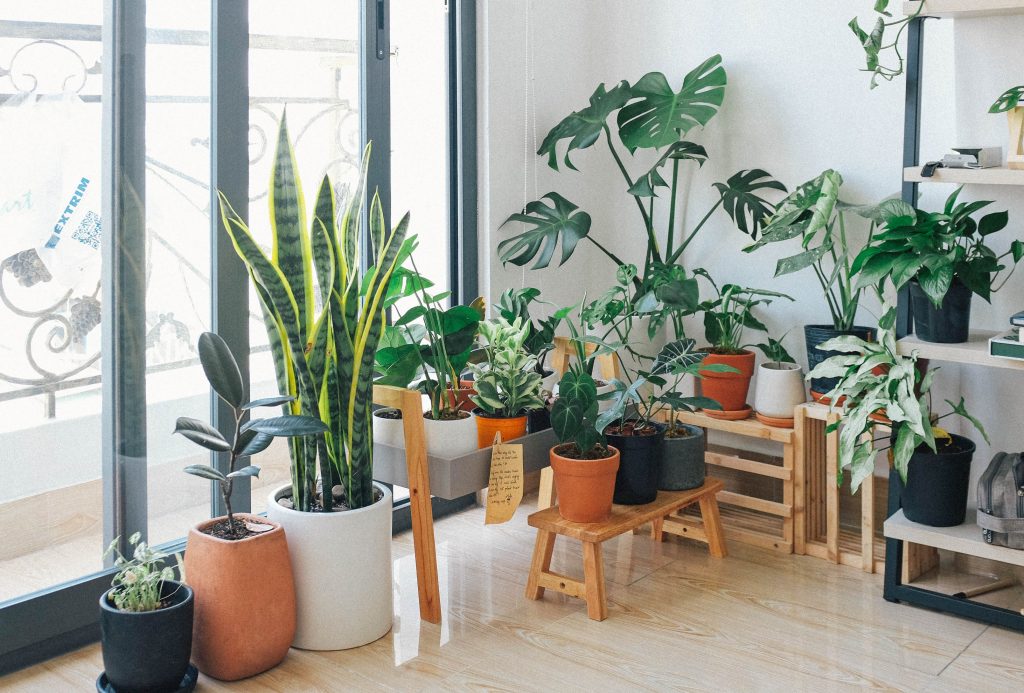
It is best to bring all plants in at the same time, and leave them inside until the very last chance of a freeze is over in the spring. Photo: Huy Phan / Pexels
Before you invite your container plants in for a winter stay, go through our prep checklist.
Get ready. Depending upon where you process for the change, a drop cloth is advisable. Have some pruning sheers and perhaps a magnifying glass on hand. A soil probe will help you assess the soil moisture.
Give each plant a thorough inspection. Pay particular attention to the undersides of leaves. Pests are smart – they hide! Clean off the leaves and stems with room temperature water and a drop of Ivory liquid soap. Wipe the top and bottom of all leaves using old socks over your hands.
You don’t want pests to find new homes on your healthy pest-free indoor plants. It is critical to do a careful inspection. A few signs of pests to look for and treatment tips:
Spider mites: These are almost too small to see without a magnifying glass. Webbing is an indication of a thriving community. Wipe off with soapy water.
Mealybugs: White, cottony-looking clumps. A dilution of rubbing alcohol will usually do the trick.
Aphids: Small clusters of teeny bugs. They can be almost any color. Wash off with a strong spray of water.
Fungus gnats: The worst! Stir the soil up a bit and see if any fly out. Place a small amount of red wine nearby and watch them get drunk and drown. Also, let the soil surface dry out.
Scale: Look for small bumps on stems and/or a sticky substance on the leaves. There might even be sticky spots on the floor beneath the plants. Horticultural oil is best. Follow the directions!
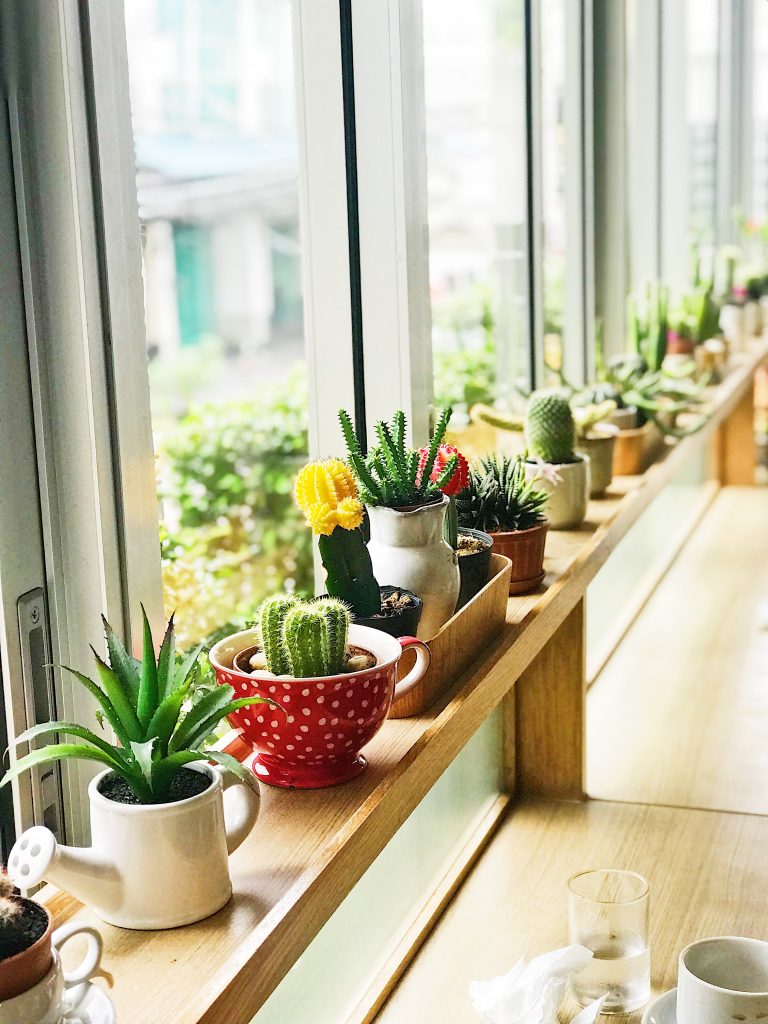
The best place for your container plants is in or near a sunny window. Without enough light, your plants won’t be able to produce chlorophyll and will suffer. Photo: Rovelyn Camato / Pexels
Find the right spot. Once your plants pass inspection, you need to put them in the right spot to be comfortable for the winter. Avoid putting them near heat ducts. It can cause them to overheat, or dry out too fast.
But you also need to be sure your plants aren’t subject to cold drafts, like from a door opening and closing. Tropical plants don’t like to be in temperatures below 58 degrees, and cold drafts can damage them.
The best place is in or near a sunny window. Without enough light, your plants won’t be able to produce chlorophyll and will suffer.
This advice might not be obvious to you, but trust the Eco-Warrior: reduce watering your outdoor plants when you bring them inside. They will be getting less light and growing less as a result.
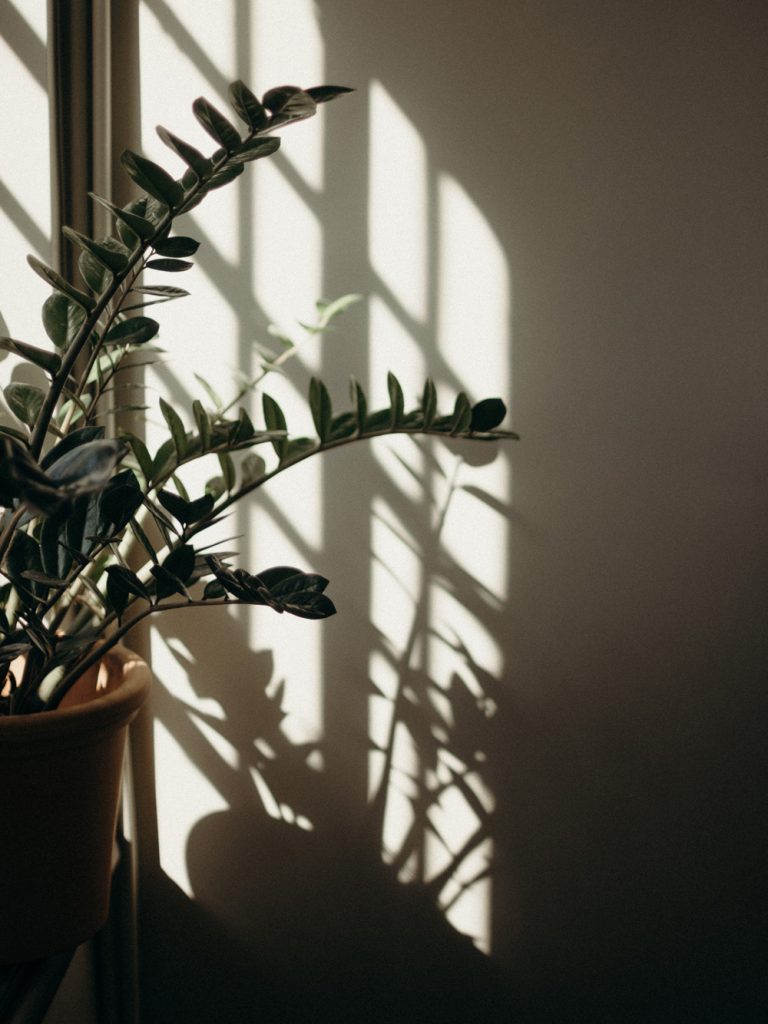
Tropical container plants thriving outdoors in the summer will do better inside, and can get through a few months with the lower light indoors. Pnoto: Cottonbro / Pexels
Let your plants hibernate. This is not the time to re-pot or prune unless you see an infestation of bugs that can easily be removed by cutting off a branch. You don’t want to force growth until warmer weather and more sunny hours in the day return next spring. And don’t fertilize until spring when you take them back outside.
For plants too big to move inside, try to move them to a warmer location near your home’s ambient heat. Try to shelter them from cold blasts of wind. On the coldest days, you can try covering them to protect them from freezing. But if you live where it snows or gets extremely cold for multiple days in a row, there might be nothing you can do to save them.
We enrich people’s lives with plants every day at Good Earth Plant Company, and we hope our expert tips help your plants stay healthy all year long.
Need more help? Have questions about more ways to bring nature into your indoor spaces! I’m just an email away – really! jim@goodearthplants.com at your service.

